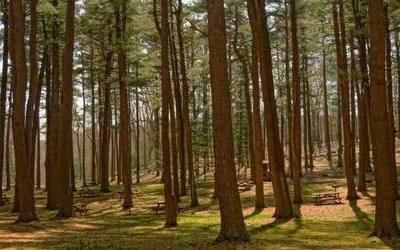🇱🇰 Sri Lanka
Sri Lanka Travel Guide - Authentic Island Adventures & Local Culture
1 destinations · Budget level 1
Overview
Sri Lanka packs incredible diversity into a small island - ancient Buddhist temples, colonial hill stations, pristine beaches, and wildlife reserves where elephants roam freely. Sri Lankan culture blends Sinhalese Buddhist majority with Tamil Hindu, Muslim, and colonial influences creating rich complexity. Rice and curry defines cuisine with fiery sambols and coconut milk bases. Cricket is religion, tea culture runs deep, and locals navigate post-civil war reconciliation with resilience and warmth. The island's compact size means mountain highlands, ancient cities, and beach paradises all within few hours' drive.
Travel tips
Three-Wheeler Mastery: Tuk-tuks everywhere, negotiate price before riding or use PickMe app, locals never pay tourist rates. Rice and Curry Ritual: Lunch is rice with multiple curries, locals eat with right hand mixing everything on banana leaf. Train Romance: Hill country trains Kandy to Ella legendary, locals hang from doors for views, book ahead or embrace standing. Spice Level Warning: 'Medium spicy' for Sri Lankans means pain for foreigners, always request 'mild' initially. Monsoon Complexity: Two monsoons affect different coasts at different times, southwest wet May-September, northeast wet November-February.
Cultural insights
Sri Lankan society deeply shaped by Buddhism (70% population) with temple culture central to daily life. Family ties dominate with multi-generational households common, arranged marriages still prevalent. Cricket transcends sport becoming national obsession - streets empty during important matches. Caste system persists subtly despite official prohibition. Post-civil war trauma lingers with Tamil-Sinhalese tensions unspoken but present. 'Island time' mentality means flexible schedules and patient acceptance of delays. Locals incredibly hospitable, inviting strangers for tea and conversation. British colonial influence visible in tea culture, train system, and bureaucratic structures. Ayurveda medicine practiced alongside modern healthcare.
Best time to visit
Southwest Coast (December-March): Dry season for Colombo, Galle, Mirissa, Weligama - perfect beach weather, 28-32°C. Northeast Coast (April-September): Dry season for Trincomalee and Arugam Bay surf spots, 30-35°C. Hill Country (December-March): Best weather for Ella, Kandy, tea country, cooler 15-22°C. Year-Round Options: Some region always accessible, locals know monsoon patterns and plan accordingly. Avoid: April extremely hot island-wide (35-38°C), inter-monsoon period humid and uncomfortable.
Getting around
Buses: Cheap chaos, locals pack in sardine-style, government CTB buses vs private coaches, pickpockets target tourists. Trains: Scenic hill country routes, locals book sleeper berths weeks ahead, third class crowded but authentic. Three-Wheelers (Tuk-tuks): Everywhere and unavoidable, PickMe app for fair pricing or negotiate hard, locals ride daily. Cars with Driver: Affordable option (€30-50/day), locals recommend for comfort and local knowledge. Scooters: Rentals available in beach towns, chaotic traffic requires confidence, locals drive aggressively. Domestic Flights: Cinnamon Air for quick island crossing, locals use to skip long bus rides.
Budget guidance
Ultra-Budget (€15-30/day): Guesthouses €8-15, rice and curry locals' spots €2-4, government buses €1-3, free beaches and temples. Mid-Range (€30-60/day): Comfortable guesthouses €20-40, restaurants €8-15, private buses/trains €5-12, entrance fees €10-25. Luxury (€60+/day): Boutique hotels €50-200+, seafood restaurants €20-50, private driver €40-60, premium experiences. Southern coast budget-friendly, Colombo most expensive, surf towns like Weligama offer incredible value for nomads.
Language
Sinhala (official language) uses own script making signs challenging. Tamil spoken by Tamil minority in north and east. English widely understood in tourist areas, less so in rural villages. Essential phrases: 'Ayubowan' (hello), 'Bohoma isthuti' (thank you), 'Kohomada?' (how are you?), 'Mama Sinhala katha karanna behe' (I don't speak Sinhala). Locals appreciate any attempt at Sinhala and switch to English happily. Colonial history means older generation speaks excellent English.
Safety
Sri Lanka generally safe with friendly welcoming people. Watch for aggressive tuk-tuk drivers and gem scams targeting tourists. Trains and buses attract pickpockets - guard valuables. Swimming: strong currents dangerous, heed warning signs, locals know safe beaches. Stray dogs everywhere but mostly harmless. Modest dress at temples required - cover shoulders and knees. Emergency: 119 (ambulance), 118 (police). Tap water unsafe - locals drink boiled or bottled water always. Dengue fever risk during monsoons - mosquito protection essential.
Money & payments
Sri Lankan Rupee (LKR) is currency. ATMs widely available in towns, withdraw max amounts to minimize fees. Cards accepted in hotels and restaurants, but small shops and local eateries cash-only. Typical costs: Rice and curry €2-4, Hoppers breakfast €1-2, Tuk-tuk ride €1-3, Train ticket €2-8, Mid-range guesthouse €20-35/night, Beer €2-4. US dollars accepted some places but exchange rate poor. Bargaining expected in markets and for tuk-tuk rides - locals never pay first price quoted to tourists.
